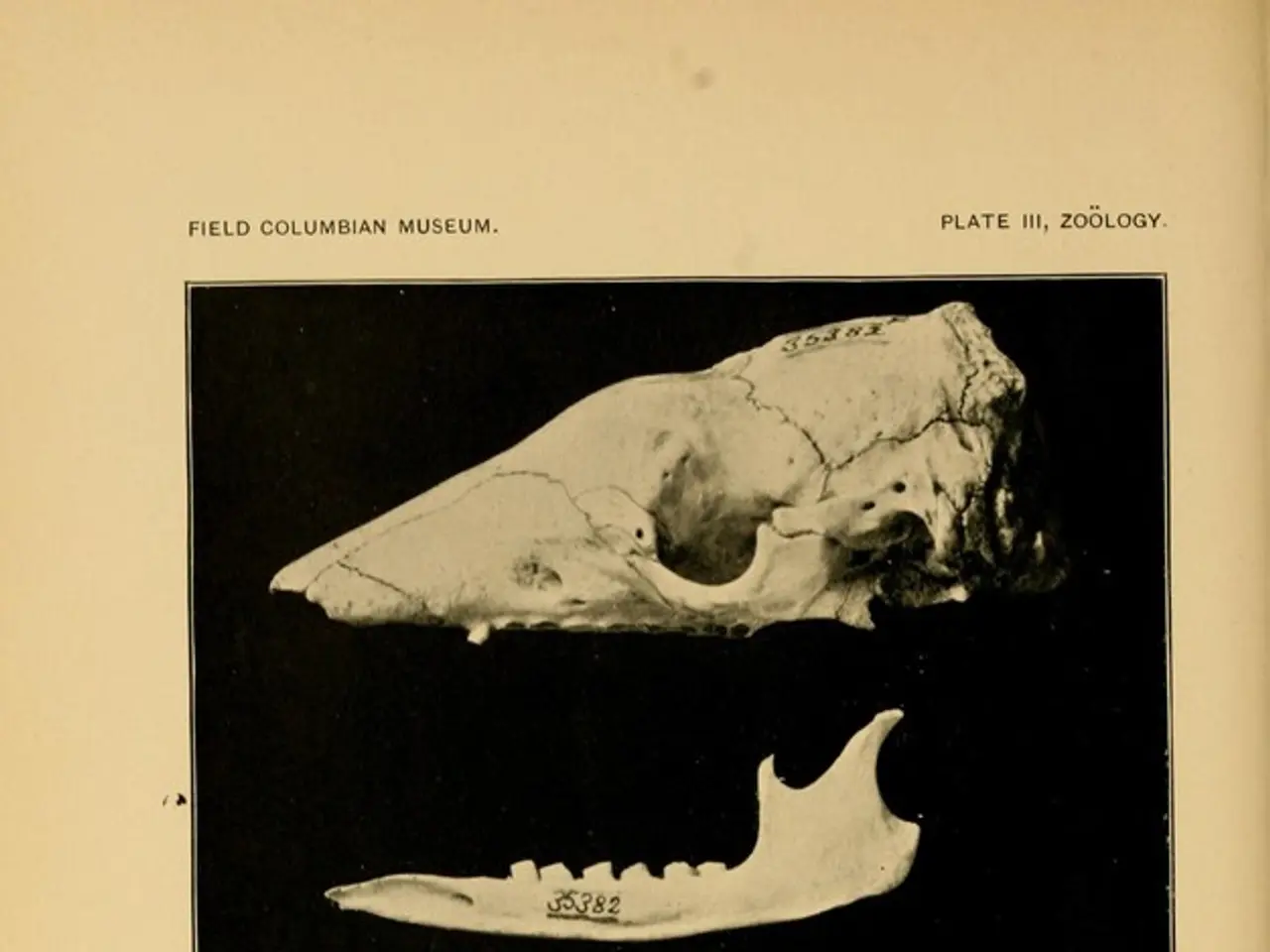Investigating the potential for infusions to combat osteoporosis
In the battle against osteoporosis, various treatment options are available. One such method is infusion therapy, which involves administering medications directly into a person's bloodstream. This article will delve into the specifics of infusion therapies, focusing on bisphosphonates like zoledronic acid and ibandronate, and their related drug, denosumab.
Infusion therapy for osteoporosis can be an effective treatment, but it's essential to understand the potential side effects and risks. Bisphosphonates, for instance, work by inhibiting farnesyl pyrophosphate synthase, thus preventing bone resorption. However, they can carry several potential side effects.
Common side effects of bisphosphonates may include flu-like symptoms such as fever and muscle pain, back, arm, or leg pain, gastrointestinal issues like stomach upset and esophageal irritation, headache, and dizziness.
More serious potential risks associated with bisphosphonate infusions include kidney problems, hypocalcemia (low blood calcium), osteonecrosis of the jaw (ONJ), atypical femoral fractures, and an increased risk of infections, particularly with denosumab.
Kidney problems can occur, especially in people with pre-existing kidney issues, dehydration, the elderly, or those taking other nephrotoxic drugs. Proper hydration before and after infusion is crucial to reduce this risk.
Hypocalcemia, a condition characterised by dangerously low calcium levels, can also occur with bisphosphonates and denosumab. This requires close monitoring, supplementation with calcium and vitamin D, and may present with symptoms like muscle spasms, numbness, or cardiac issues.
Osteonecrosis of the jaw is a rare but serious condition involving jaw bone death, more common with intravenous bisphosphonates. Risk factors include invasive dental procedures or radiation to the head and neck, making dental evaluation before starting therapy recommended.
Atypical femoral fractures, unusual fractures in the thigh bone, may occur with long-term use of bisphosphonates, often preceded by thigh pain. These fractures can be bilateral.
Denosumab, a related infusion therapy, also carries the risk of serious infections, including skin reactions and systemic infections.
Additional considerations include potential side effects like elevated cholesterol levels, bladder infections, and skin reactions reported with denosumab rather than bisphosphonates.
Calcitriol, a hormone formed from vitamin D, aids in the absorption of calcium, helping to strengthen bones and improve bone mass. Synthetic parathyroid hormone promotes bone formation, increasing bone mass and improving bone architecture. However, constant exposure to parathyroid hormone can cause bone resorption, but intermittent administration promotes bone formation.
Hormone therapy, involving the hormones estrogen and progesterone, is prescribed to someone experiencing menopause due to the lack of estrogen production. This therapy may help prevent bone loss and reduce the risk of fractures.
Intramuscular therapy, involving injections into specific muscles or muscle groups, is another method of administration. Epidural therapy, injecting medication into the epidural space of the spine, is another option, although less commonly used in the treatment of osteoporosis.
According to the Bone Health and Osteoporosis Foundation (BHOF), people should receive intravenous zoledronic acid once per year or once every two years.
In summary, while infusion therapies for osteoporosis, such as bisphosphonates and denosumab, can be effective treatments, it's crucial to weigh the potential benefits against the risks. Proper understanding, regular monitoring, and open communication with healthcare professionals are key to making informed decisions about treatment options.
Health and wellness are important factors in managing chronic diseases like osteoporosis. Infusion therapies, such as bisphosphonates and denosumab, are treatment options for osteoporosis. These therapies work by inhibiting bone resorption in the body.
Bisphosphonates like zoledronic acid and ibandronate carry potential side effects like flu-like symptoms, gastrointestinal issues, headache, dizziness, kidney problems, hypocalcemia, osteonecrosis of the jaw, atypical femoral fractures, and infections.
Denosumab, a related infusion therapy, also carries the risk of serious infections, skin reactions, and bladder infections. Proper hydration and dental evaluation before starting therapy help reduce the risks of kidney problems and osteonecrosis of the jaw.
Calcitriol, a hormone that aids in calcium absorption, and synthetic parathyroid hormone are other alternatives. Hormone therapy, involving estrogen and progesterone, may help prevent bone loss and reduce the risk of fractures.
Other treatment options include hormone replacement therapy, intramuscular therapy, and epidural therapy. Regular nutrition and fitness-and-exercise are essential for maintaining cardiovascular health and improving bone density.
Mental health is another aspect to consider during the treatment process, as chronic diseases like osteoporosis can cause stress and anxiety. Skin care and therapies-and-treatments are also crucial to address any potential skin conditions or complications.
In managing osteoporosis, it's essential to consult with healthcare professionals and stay informed about available treatment options, their benefits, and risks. Frequent monitoring and open communication with healthcare providers can help ensure the best possible treatment outcomes.
Emphasizing health-and-wellness, including proper nutrition, regular exercise, and mental health support, can further enhance the effectiveness of osteoporosis treatments and improve overall quality of life.
Eye-health and respiratory-conditions may also be affected by osteoporosis and its related treatments, so regular checkups and screenings are important for managing these conditions. Proper management of chronic medical-conditions like chronic kidney disease, cancer, and chronic-respiratory-conditions is necessary to ensure safe and effective osteoporosis treatment.




